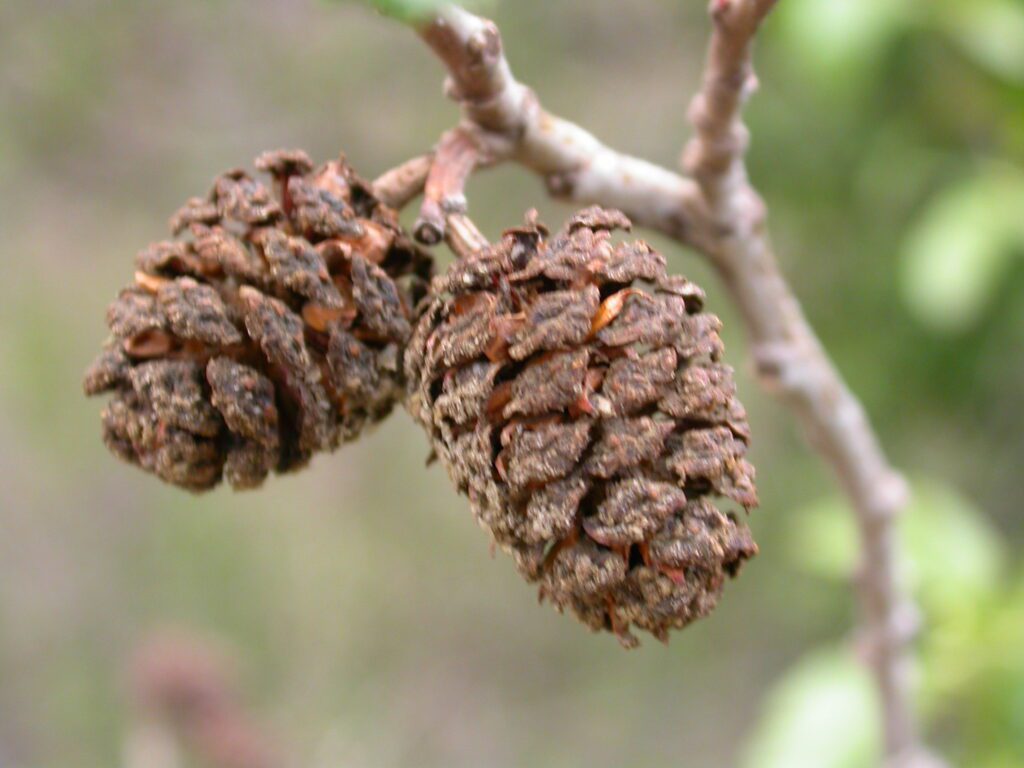Alnus Orientalis
This riparian tree, live near water streams in most of the Lebanese rivers, that is why it is called in Arabic (جار الماء) water neighbor. It grows up to 25 m in height with spreading branches. We recommend it for the following places:
- Inside a heavily irrigated lawn, where it will create mutual benefit with the lawn, it will benefit from heavy irrigation and will add shade to the lawn so that it will not demand as much water and will provide the place with nitrogen fixed by nitrogen fixing bacteria that live in the roots.
- At the periphery of agriculture lands, where it also benefit from irrigation water and provide the land with some services like acting as a windbreak, and providing nitrogen source when it throws its leaves, in other words it is the organic fertilizer provider for agriculture.
- It could also be used as a street tree in places where the soil keeps wet during the summer, in these sites very few other trees are able to survive.
- During winter season between December and February, male catkins fig 1 provide pollen as a protein source for the bees.
If you visit Nabeh el Safa you can find a very large tree at the entrance of Nabeh el Safa water falls restaurant.
Male catkins

تعيش هذه الشجرة النهرية بالقرب من مجاري المياه في معظم الأنهار اللبنانية، ولهذا تسمى (جار الماء). يصل ارتفاعها إلى 25 مترًا ولها فروع منتشرة. ننصح به للأماكن التالية:
وسط العشب المروي بكثافة، حيث سيخلق منفعة متبادلة مع العشب، وسوف يستفيد من الري الغزير وسيضيف ظلًا إلى العشب بحيث لا يعود يحتاج إلى الكثير من الماء وسيزود المكان بالنيتروجين المثبت بواسطة البكتيريا المثبتة للنيتروجين التي تعيش في الجذور.
على أطراف الأراضي الزراعية، حيث تستفيد أيضاً من مياه الري وتزود الأرض ببعض الخدمات مثل العمل كمصد للرياح، وتوفير مصدر النيتروجين عندما ترمي أوراقها، أي أنها مزود الأسمدة العضوية للزراعة.
ويمكن أيضًا استخدامها كشجرة شارع، خاصة في الأماكن التي تظل فيها التربة رطبة خلال فصل الصيف، ففي هذه المواقع لا يتمكن سوى عدد قليل جدًا من الأشجار الأخرى من البقاء على قيد الحياة.
خلال فصل الشتاء بين كانون الأول وشباط، يوفر الزهر الذكري حبوب اللقاح كمصدر للبروتين للنحل.
إذا قمت بزيارة نبع الصفا يمكنك العثور على شجرة كبيرة جدًا عند مدخل مطعم شلالات نبع الصفا.
